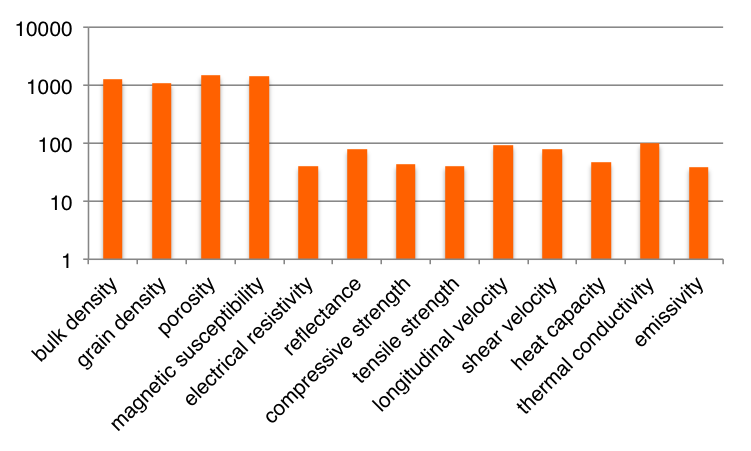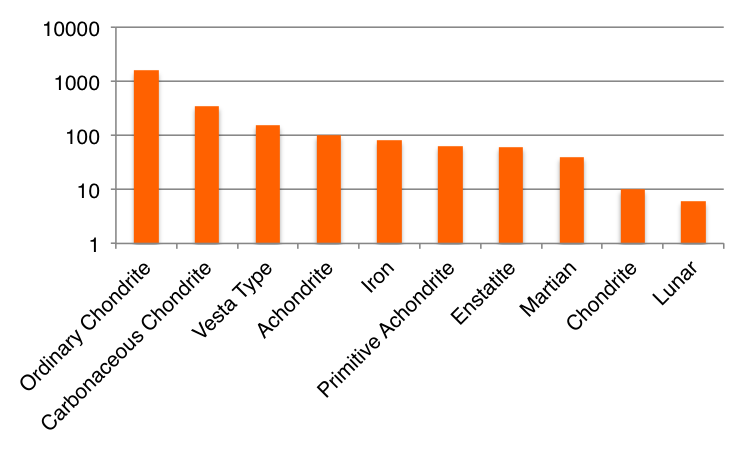Purpose
The goal of neoproperties.nasa.org is to aggregate physical properties of Near Earth Objects (NEOs) and meteorites into linked searchable databases. The emphasis is on properties relevant to the planetary defense community.
Functionality
The neoproperties interface allows users to search over any parameter in the database, download the results, plot distributions of various quantities and drill down to see all the data available. If you're looking for some info about how to get started, look here.
Data Sets
The current database (version = 2018.5) is comprised of two separate data sets, one of meteorites and the other of NEOS. The meteorite data set includes physical properties from multiple resources. The properties include densities, porosity, elastic constants, electrical resistivity, reflectance, emissivity, thermal conductivity, heat capacity, and magnetic susceptibility.
The NEO data set includes taxonomies and thermally determined diameters from a dozen different resources. The database includes basic parameters (H, orbital family, MOID) for over 16,000 NEOs; taxonomy for ~ 690 NEAs; diameters for ~ 2300 NEAs and ~ 400 objects with both known taxonomy and diameter. Although there are a large number of NEAs with either diameter or taxonomy in the database, they are not necessarily representative of all NEAs (or even all known NEAs). The NEAs with taxonomies tend to be brighter than those with measured diameters. Both the taxonomy and diameter datasets tend to be significantly brighter than the population of known NEAs (Figure 1.) Low MOID (minimum orbital intersection distance) objects are under-represented in the taxonomy and diameter measurements as compared to the population of known NEAs (Figure 2). Compared to the population of all known NEAs, Amors are over-represented in the taxonomy dataset and under-represented in the diameter dataset.
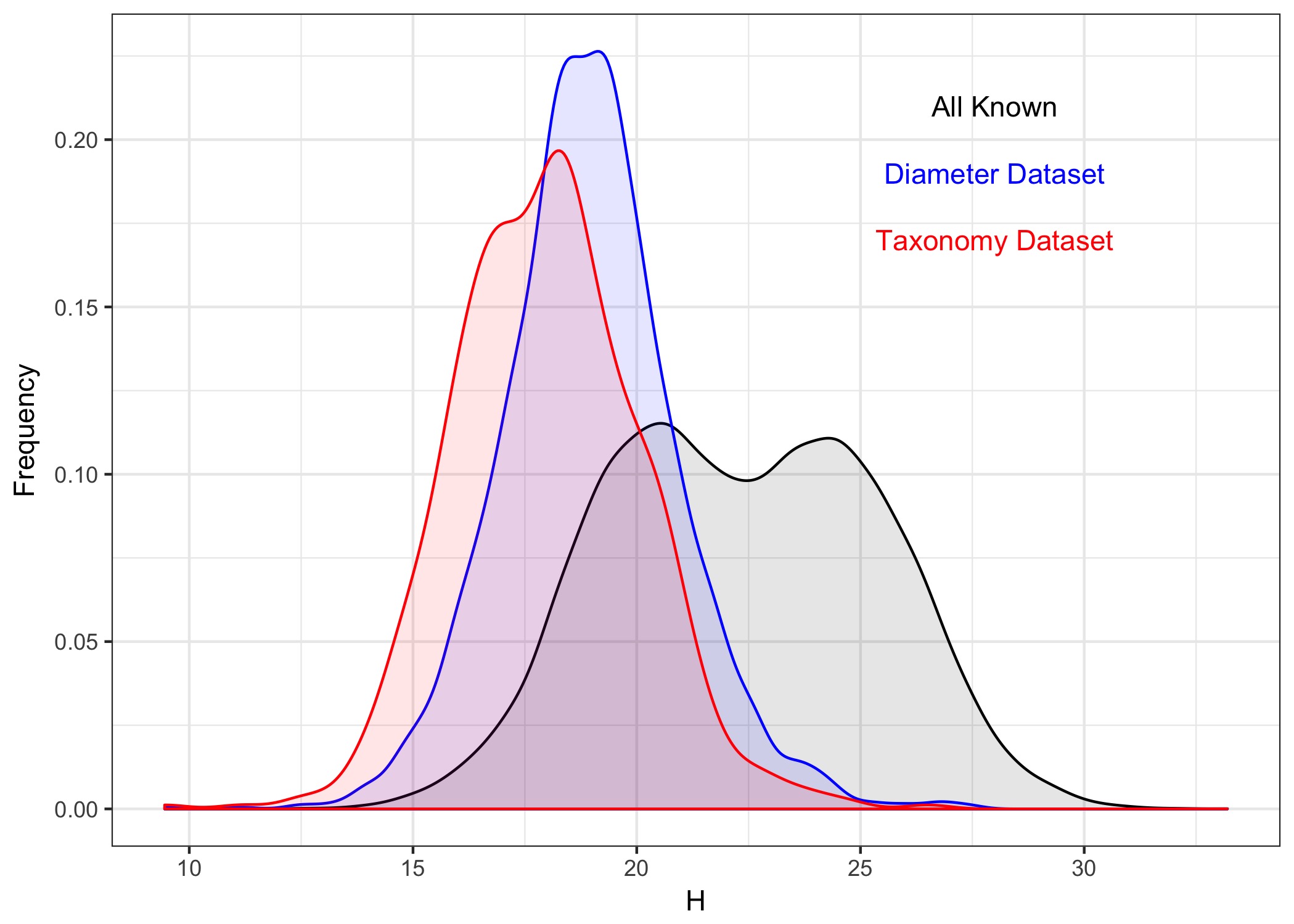
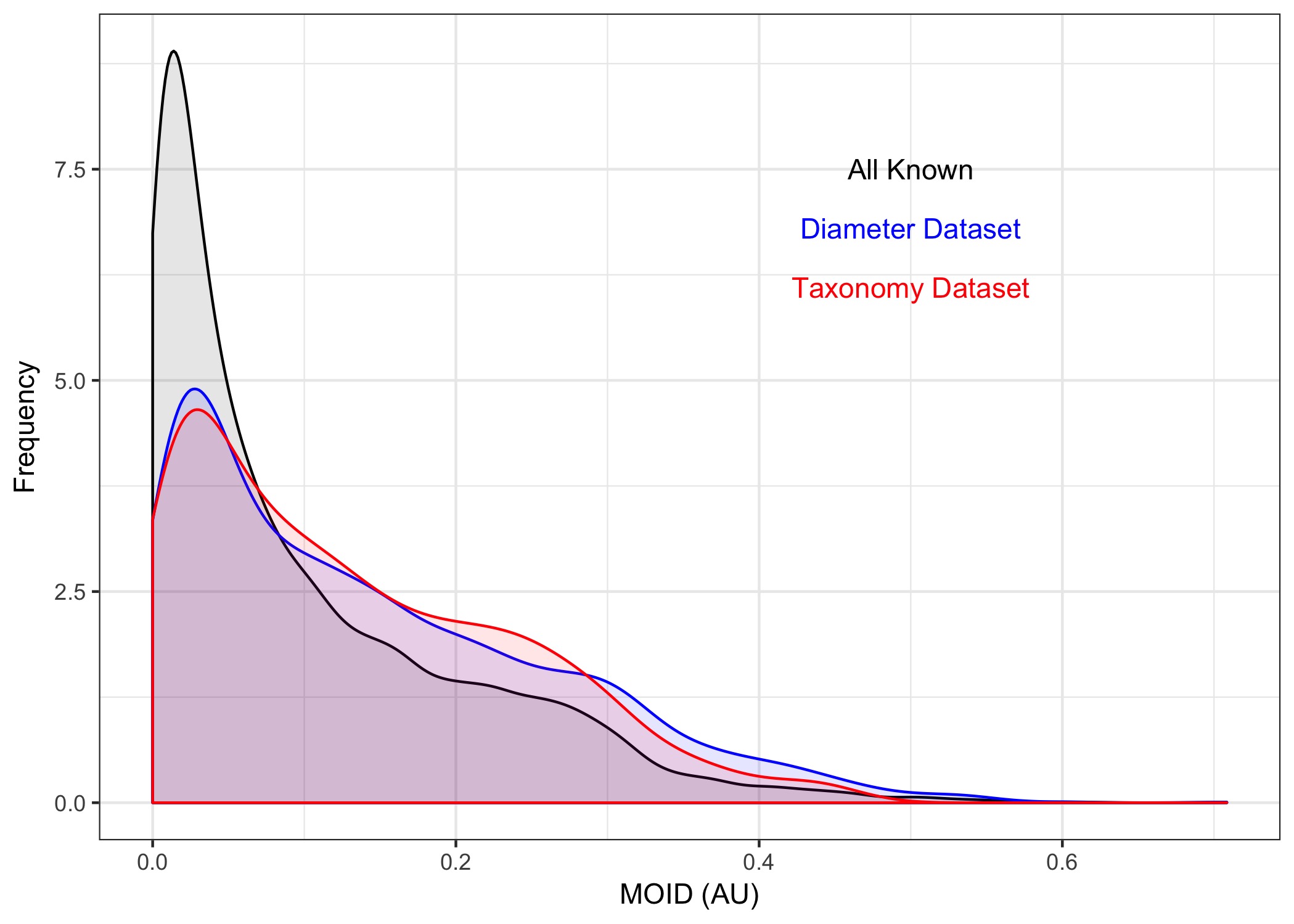
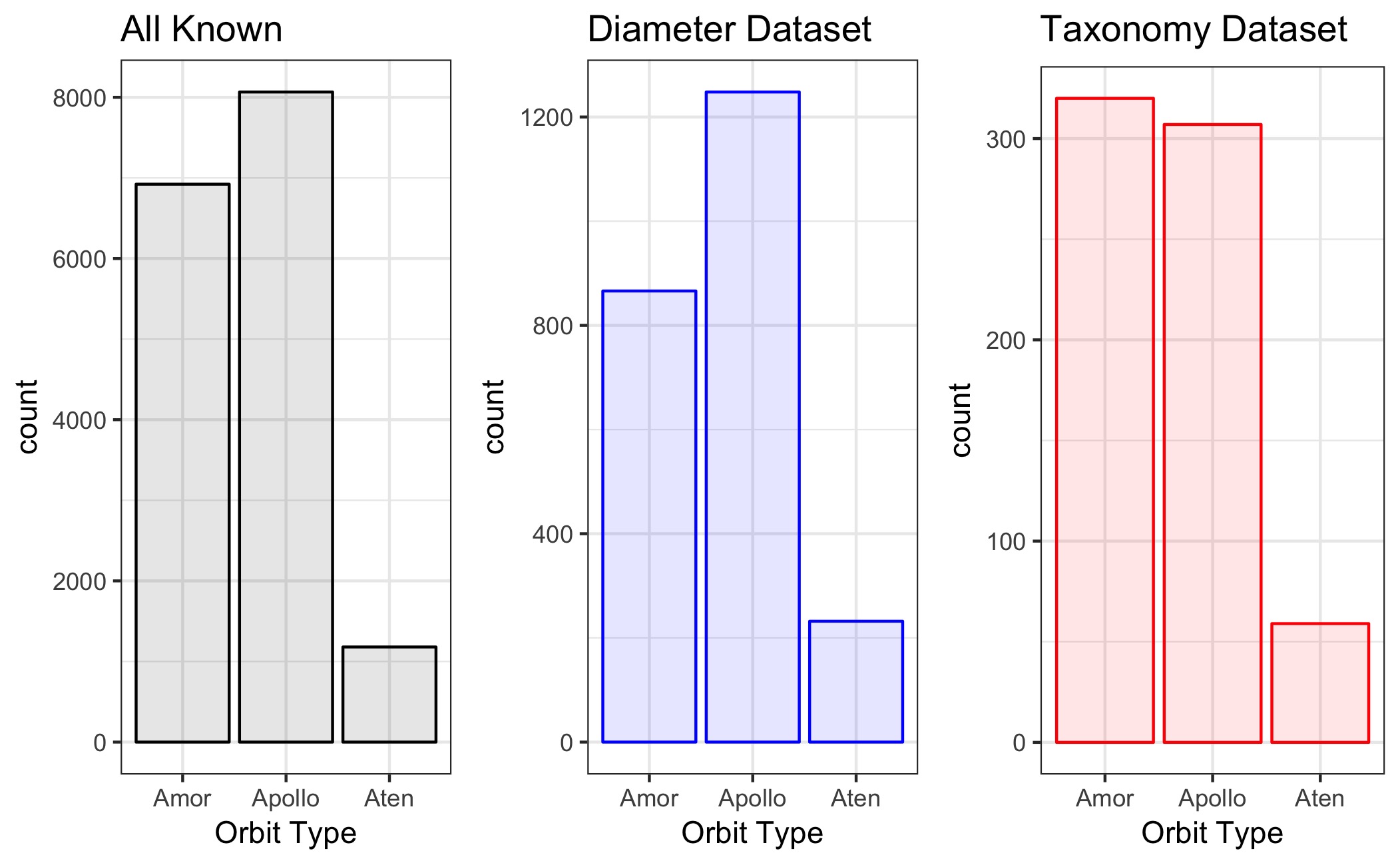
The meteorite database contains physical properties of over 900 meteorites and over 2300 unique samples. Over 1000 measurements of bulk density, grain density, porosity and magnetic susceptibility are included. Other properties generally have ~ 100 or fewer measurements. The number of measurements of each physical parameter is shown in Figure 4. The meteorite names and types in the neoproperties database are consistent with standards set by the Meteoritical Society. While the bulk of meteorites in the database are Ordinary Chondrites, numerous other types are represented. The distribution by meteorite type is shown in Figure 5.
